In 1999, ASTM Standard E2018-99 was published by the American Society for Testing and Materials, outlining what’s considered “good and customary practice” for commercial property inspections.
The Standard was written to demonstrate what’s considered proper in conducting what’s called a baseline Property Condition Assessment, or PCA. As a commercial property inspector, you’re no doubt familiar with this 21-page Standard and likely use it in the course of your business.
The Standard is specific to commercial real estate inspections, to be used as a guide in commercial real estate transactions. ASTM Standard E2018-99 has since been updated, with the latest version known as Standard E2018-15, owing to the update having been made in November of 2015. Any professional conducting a commercial inspection should be following the guidance provided by this Standard. Although following the Standard is strictly voluntary, it should be considered that ASTM E2018-15 is the recognized and accepted protocol for completing a commercial inspection.
The Basics of a “Good and Customary” Commercial Inspection
A properly conducted Property Condition Assessment consists of four steps:
- Document review of any pertinent drawings, maintenance records, inspection certificates, citations, evacuation plans, floor plans, environmental studies, and more
- A visual walk-through inspection of the property, including interviews of pertinent staff members such as the head of the maintenance department
- Preparation of a list of recommended major replacements or repairs needed, along with the preparation of a cost estimate
- A written report detailing document findings and costs for recommended repairs
The Visual Walk Through
The visual walk-through portion of a commercial inspection will include a thorough look at the building’s exterior, interior, and five major systems as outlined below:
- Inspection of a building’s exterior includes the outer walls and roof, sidewalks, parking lots, and landscaping. Attention will be paid to whether the building is structurally sound and detail any needed repair costs. You may need to rely on the insights of various other professionals such as contractors, roofing experts, and building code inspectors to fully determine the building’s exterior condition.
- Inspection of the building’s interior serves to confirm that interior spaces conform to local building codes and to uncover any safety-related hazards or risks. Visual observation will include inspection of walls, doors, windows, floors, separate offices, bathrooms, kitchen areas, storage spaces, etc. Anything within the building not up to code should receive renovation recommendations.
- A commercial building’s five major systems include structural integrity, roofing, electrical, plumbing, and heating/ventilation/air conditioning (HVAC). Any system you find not up to snuff should receive a cost estimate from you in your report for repair or replacement. Also check building alarms, fire safety systems, and sprinkler systems.
Property Condition Assessment Goals
A Property Condition Assessment (CPA), or commercial inspection, may be ordered by a lender or by a commercial real estate investor in order to understand the relative condition of a property and how that condition will impact the future financial performance of the asset. Commercial real estate investors are interested in knowing what an acquisition will cost, what the return on investment (ROI) will be, and the proposed residual value.
When ordered by an insurance company, you’ll be expected, as the commercial inspector, to determine the value of the property to estimate how much it would cost to replace the property were it to be totally destroyed by a covered insurance risk. You’ll also be expected to determine any risks that could be the cause of future insurance claims. Regardless of the type of commercial inspection ordered, you’ll be expected to keep an eye out and report on:
- Inadequate building design
- Worn systems or an improper maintenance history
- Building code violations
- Equipment that’s coming near to the end of its useful lifespan
- Poor workmanship
- Safety risks that pose potential liability
A Capable Partner to Help With Accurate Underwriting
As a commercial property inspector, you may be called on to complete an inspection on any type of building or structure located on a parcel of commercial real estate. These are intended as income-generating properties, either through capital gains or the generation of rental income. They may include many types of properties such as restaurants, cafes, hotels, hospitals, warehouses, factories, shopping malls, multi-family housing, office buildings, sports facilities, storage facilities, and much more. Often other specialist inspectors may need to be called in to assist with a thorough inspection, but you are responsible for the production of the final Property Condition Assessment Report for your client.
Insurance Risk Services (IRS) has been performing top-rated inspections for more than 40 years and partnered with numerous national insurance companies to provide expert commercial field inspection services and to assist in producing more accurate underwriting. Let them go to work for you. Contact Insurance Risk Services today.


